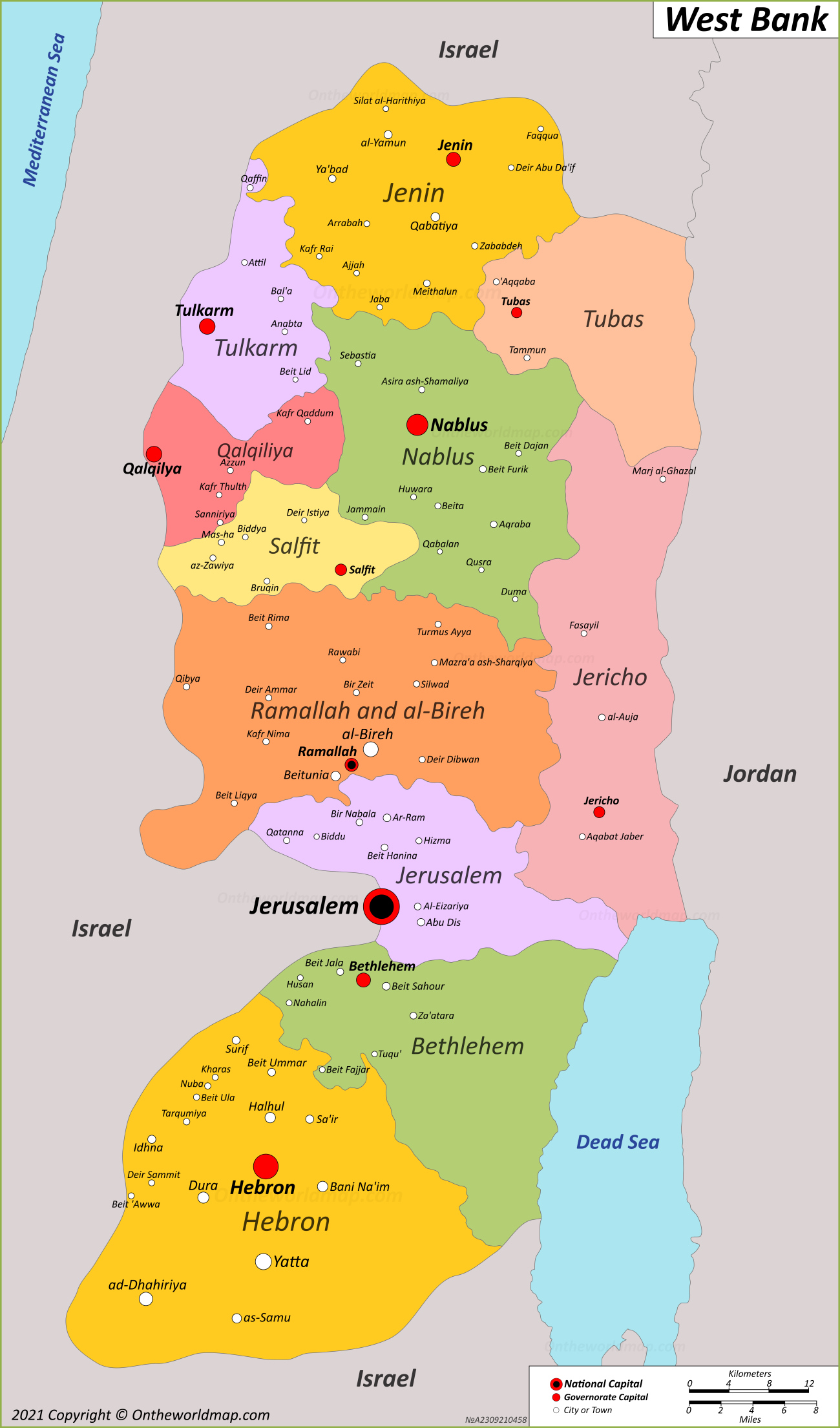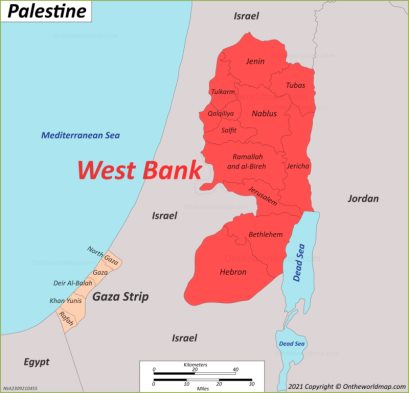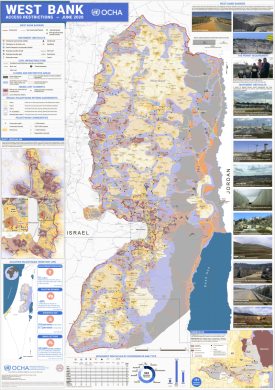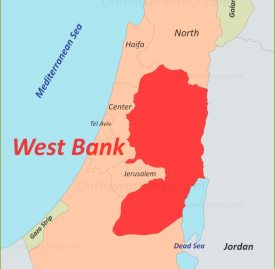West Bank Map
Description:
You may download, print or use the above map for educational, personal and non-commercial purposes. Attribution is required. For any website, blog, scientific research or e-book, you must place a hyperlink (to this page) with an attribution next to the image used.
Online Map of West Bank
About West Bank
West Bank territory lies between Israel and Jordan, occupying an area of approximately 5,655 square kilometers (2,183 sq mi). The territory includes significant portions of the western bank of the Jordan River, hence its name.
The region encompasses diverse topographical features, from the Jordan Valley in the east to the central highland mountains. The West Bank contains several major Palestinian cities, including Ramallah, which serves as the de facto administrative capital of the Palestinian Authority, Nablus, Hebron, and Bethlehem. These urban centers represent crucial economic and cultural hubs for the Palestinian population.
The West Bank came under Jordanian control following the 1948 Arab-Israeli War and remained so until Israel captured it during the 1967 Six-Day War. The territory's current political status remains disputed, with Israel maintaining military control while the Palestinian Authority exercises limited self-governance in specific areas under the Oslo Accords framework established in the 1990s.
Demographics indicate a population of approximately 3 million Palestinians and about 450,000 Israeli settlers residing in settlements throughout the territory. These settlements, while Israel considers them legal, face widespread international criticism and the United Nations deems them illegal under international law. The territory's economy relies heavily on agriculture, small-scale manufacturing, and service industries, though development faces significant restrictions due to ongoing political tensions and security measures.
The West Bank contains numerous archaeological and religious sites significant to Judaism, Christianity, and Islam. The city of Bethlehem, birthplace of Jesus Christ according to Christian tradition, attracts thousands of religious pilgrims annually. The territory also includes hundreds of ancient archaeological sites dating from various historical periods, including Roman, Byzantine, and Ottoman eras.
Water resources in the West Bank play a crucial role in regional politics and daily life. The territory overlies the Mountain Aquifer, a vital water source for both Israeli and Palestinian populations. Access to and control of these water resources remains a significant point of contention between Israeli and Palestinian authorities.
The Facts:Capital: Jerusalem, Ramallah.
Official language: Arabic.
Currency: Israeli new shekel, Jordanian dinar (JOD).
Area: 2,183 sq mi (5,655 sq km).
Population: ~ 3,000,000.
Largest cities: Abu Dis, Bani Na'im, Beit Jala, Beit Sahour, Beit Ummar, Beitunia, Bethlehem, al-Bireh, ad-Dhahiriya, Dura, Halhul, Hebron, Idhna, Jenin, Jericho, Nablus, Qabatiya, Qalqilya, Ramallah, Sa'ir, as-Samu, Surif, Tubas, Tulkarm, Ya'bad, al-Yamun, Yatta.
Governorates of West Bank: Jenin, Tubas, Tulkarm, Nablus, Qalqilya, Salfit, Ramallah and Al-Bireh, Jericho, Jerusalem, Bethlehem, Hebron.
Maps of Palestine
Cities of Palestine
Maps of Israel
Cities of Israel




